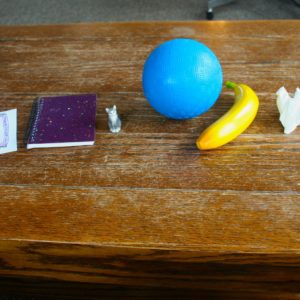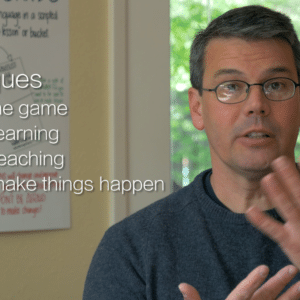You’ve set-up a series of same conversations with a fluent fool, for fluency hunting their language. You know you’re at your best if you’re Warm/Fed/Rested/Safe/Willing, and after playing for a while you begin to feel yourself becoming Full.
No one knows you better than yourself.
Many people trained in mainstream public schools have had their ability to manage their own learning blunted or even completely taken away. Institutional life has it’s own systemic needs, often in conflict with individual needs. Institutions behave as if it’s much safer and easier to train students to be an homogenous group, rather than a diverse team of individuals.
Adapting to modern institutional life has its obvious advantages; but there are also disadvantages. By focusing your attention on the needs of the system, you take your awareness away from yourself. And being aware of your state (meaning your emotions, energy, and so on) is critical for managing your own learning.
We often notice that new players to WAYK don’t understand how or why they become overwhelmed or exhausted. They may preemptively opt out of situations where they may be challenged, such as a WAYK game, instinctually avoiding a situation where they feel they can’t escape.
This is why we created technique Full; it means that a player has become temporarily “full” of language, and needs to let it digest before continuing. If they didn’t, it would be like pouring more tea into an overflowing tea-cup. Continuing would damage both their ability to retain what they’ve already acquired, and their future ability to hunt fluency playfully and enjoyably. They would begin to associate what started out as a game, with drudgery, overwhelm, and exhaustion.
Many interesting things happen when players begin to monitor their own learning state.
First, players will play longer with more commitment and attention, because they’re not worried about being trapped.
Second, players who otherwise would bog the game down because of their low energy, go to the Meadow and observe the game from a distance. They become familiar with the game just by watching.
Third, Full also becomes an effective way to double-check if techniques are being applied thoroughly enough, such as Limit, Obviously, Set-up, and Start at the Beginning. Players will often call Full, knowing that something just overwhelmed them. By applying a technique like limit more rigorously, they may then continue playing. Sometimes they can’t continue; this underscores in the moment for players and game leaders how much more they need to apply the techniques.
Short: “Technique Full: call Full whenever you’re feeling “full” of language, and you need to take a break. When you call Full you can step out of the inner circle, and go out to the Lunatic Fringe, or the Meadow, returning whenever you’re ready again.”
Long: “There are degrees of Full – try to call Full before you are drowning, when the waters are just lapping at your chin. When you do this you’ll be able to play longer and faster, circulating in and out of the game as often as you need to keep participating.”
Applying the technique to language acquisition
Share Full early, and encourage players to use it as often as they need. Full is one of the main tools players will use to accelerate the game, and yet new players usually feel reluctant to use it due to embarrassment or worrying about being rude by leaving.
• Start out a game with experienced players by asking “how Full are you?”, and demonstrating that they can show degrees with the hand-sign, by putting it somewhere between their belly-button and the top of their head.
• Call “How Fascinating!” when your first player calls Full. Encourage and celebrate the use of i whenever you see it.
• Share Full early in the game, within the first few minutes.
• Anytime you see a player that seems a little dazed, make the hand-sign and point at them asking, “are you Full? You look full…”.
But what about…?
Some game leaders and players worry; what if everyone calls “Full”? Doesn’t somebody have to stay? What if you’re in a classroom, don’t the students have to keep playing whether they want to or not? What if it is a staff training and they’re paid to be there? Shouldn’t they have to keep playing?
WAYK, and therefore accelerated learning, works most effectively in the presence of participants’ free choice. The greater degree to which they freely consent to play, the greater the acceleration. This is why we provide so many levels of participation.
- TQ “the Lunatic Fringe” is for players not quite ready to jump into a hot seat in the TQ “Inner Circle”, or for players recuperating from play in the TQ “Inner Circle”.
- TQ “the Meadow” is for players with the lowest commitment level, or for those needing maximum recuperation. It’s an ideal technique for institutional environments, such as classrooms, where you’d like to allow players truly free choice to come and go, but you don’t have the realistic option to do so.
- Reminding players that by calling “Full” in the “Inner Circle”, they give other players an opportunity to jump in, is an effective way of keeping the game circulating amongst all participants.






